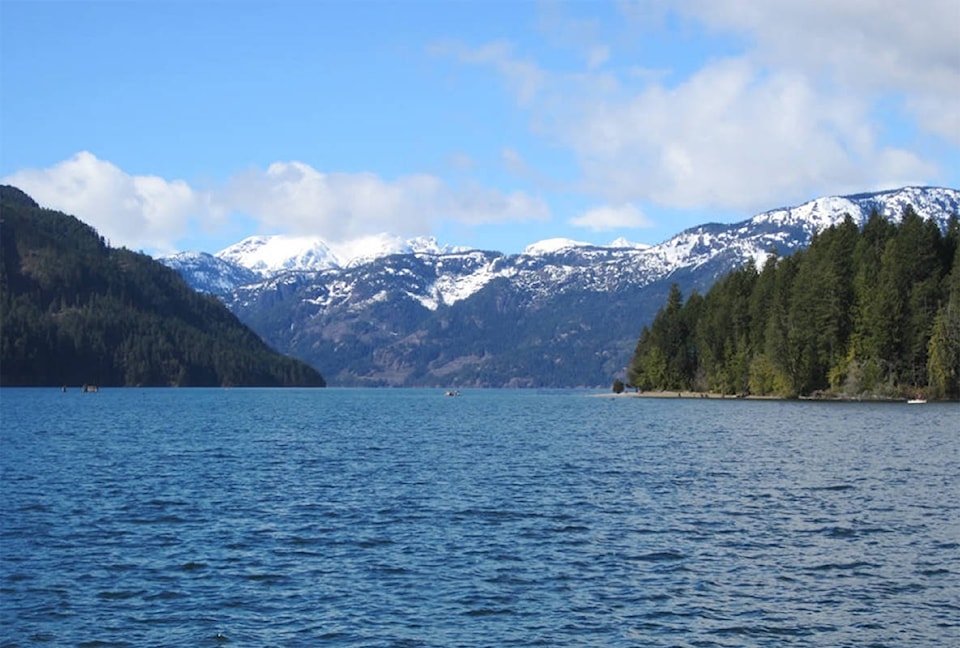The Comox Valley Regional District approved the revised scope, schedule and public assent process for its $110.6-million water treatment project on Oct. 17.
The CVRD made the decisions at an extended Comox Valley Water Committee meeting, attended by a packed gallery of stakeholders and members of the public.
Water committee chair and Courtenay director Bob Wells said he is excited that the project will move forward as approved.
”The people of the Comox Valley have had to put up with boil water advisories, so this is something that moves us forward in a way that ensures safe drinking water for generations to come,” he said after the meeting.
READ MORE: CVRD and Island Health at odds as water treatment project faces delays
The Comox Valley Water Treatment Project (CVWTP) is a large-scale capital project that will rehaul the Valley’s drinking water system for 45,000 residents in Courtenay, Comox, and surrounding areas.
The project includes the installation of a deepwater intake in Comox Lake, a raw water pump station, a new water treatment plant, a five-kilometer long water pipeline and a connector to the existing system.
Construction of the CVWTP is scheduled to begin in 2019, depending on grant allocations from the provincial and federal governments. The CVRD hopes to complete the project in 2021.
Island Health’s involvement:
The CVWTP stems from new water treatment guidelines in B.C. that require at least two levels of decontamination to drinking water sources. Currently, the Comox Valley is the largest region in British Columbia that only uses chlorination to treat its drinking water.
Due to high turbidity levels of water in the Comox Valley, the CVRD occasionally has to issue boil water advisories (BWAs) to the public.
Earlier this fall, Island Health expressed concern with the CVRD that the project was facing delays. As the region’s healthcare authority, Island Health is responsible for implementing water treatment standards.
As an interim solution, Island Health and the CVRD agreed that ultraviolet disinfection will be installed at the current chlorination station until the project is completed. The UV system will mean that a boil water notice is not required until turbidity levels reach two turbidity units or more.
Installing the UV disinfection will cost the CVRD $1 million.
“That sets us up so that if this does take an extra year or two because of funding, because of delays, that we have that bit of wiggle room and we’re working cooperatively with Island Health,” said Wells. “The fact we’re going to be putting a UV reactor in as soon as possible… it’s going to raise the NTUs we’re allowed to have in the water and reduce the number of BWAs we have by a significant amount.”
Island Health initially said that punitive measures could be taken against the CVRD due to the CVWTP’s expected delays. As was stated throughout the Oct. 17 meeting, Island Health will not impose penalties on the CVRD as long as the UV filtration is set up and the RD follows the approved schedule and scope of the project.
“The completion of the work now extends beyond the original target date of Sept 2019, and while delays can result in penalties, Island Health does not impose penalties on any water operator that is working towards compliance in an agreed upon manner,” said Island Health medical health officer Charmaine Enns.
Approval for the borrowing of funds:
Alongside the scope and schedule of the project, the water committee voted to use the Alternate Approval Process (AAP) to approve borrowing up to $29 million for the CVWTP, instead of a referendum.
Under the AAP, 10 per cent of voters or more would have to submit electoral response forms opposing borrowing for it not to be approved.
“I think in this instance, going with an AAP makes sense because the facts are clear, the outcome is non-negotiable and it will actually save taxpayers money because a referendum would cost a lot more than an AAP,” said Wells.
Wells said that even if the AAP fails, the CVRD is obligated to undertake the water treatment project, as per the province’s drinking water guidelines.
“We’re in a situation where we’ve been mandated to do these works,” he said. “There’s not really the possibility for real debate around it. If we don’t go ahead with these works, if a referendum fails or an AAP fails, Island Health has the ability to come in and force us to do this work regardless.”
The AAP is proposed for March 2018.
Funding the rest of the project:
The CVRD aims to fund most of the CVWTP through provincial and federal grants.
From its own sources, the CVRD already has about $24 million squared away in its reserves for the project. The remainder will be funded by a toll fee that direct users of the new water system will pay.
Wells said he is heading to Ottawa this week, where he will discuss the project with staff from the federal government’s Ministry of Infrastructure.
“We’ll also be meeting with ministers in Victoria to get that provincial funding as well,” he said. “We know we’re at the top of the list in terms of priorities for the province. It’s just making sure we get the money as soon as possible and as much as possible.
“The conservative expectation is that we’d get 50 per cent funding,” Wells continued. “We’re still working towards getting as much grant funding as we can to keep the water rate increases as low as possible.”
CVRD staff estimate that the water treatment project will result in an average annual increase of $86 per household per year for those who use it.
